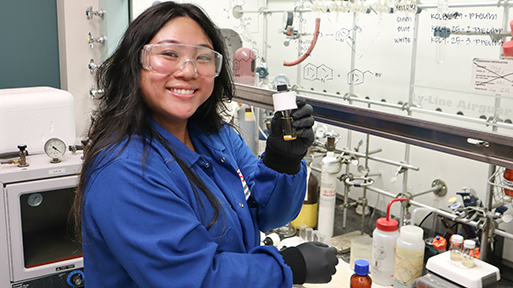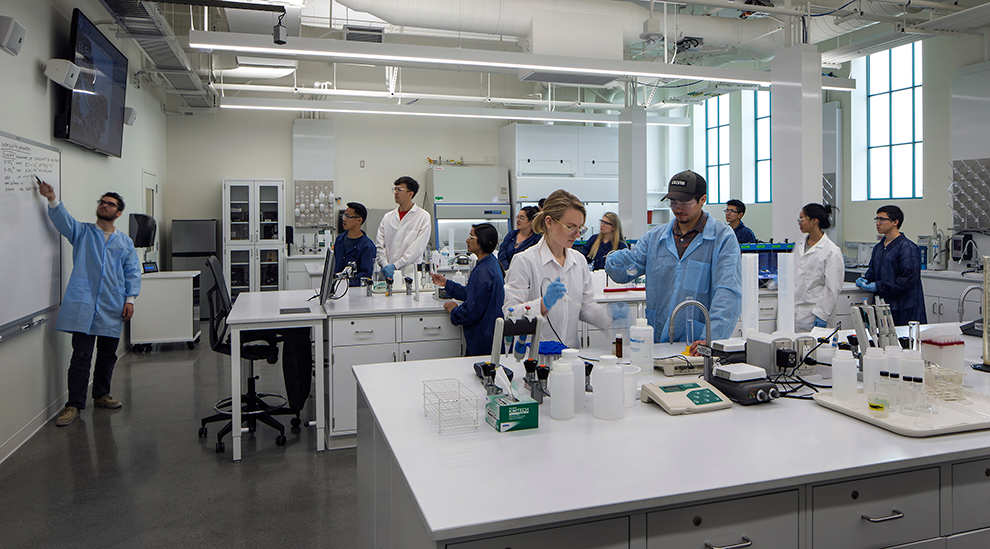Used EV Batteries Could Be Solution to Surging Electricity Demand
Two SDSU engineers are developing a power storage system using repurposed electric vehicle batteries.

By 2035, all new cars and passenger trucks sold in California must be zero-emission vehicles.
The state executive order aligns with increased demand for electric power nationwide, highlighting the need for sufficient power grid capacity to power so many zero-emission vehicles.
At San Diego State University, electrical engineer Chris Mi and mechanical engineer Kevin Wood are working on a three-year, California Energy Commission-funded project to do just that.
The pair is developing a commercial-scale power grid system using photovoltaics — converting light into electricity to generate power. Mi and Wood are working to store this generated power within second-life electric vehicle (EV) batteries.
Second-life EV batteries, or EV batteries that reach below 80% power, are typically considered to be beyond their use. However, recycling options are costly and energy-consuming.
“If we wanted to take those batteries and re-mine the components out of them, it would take a lot of energy,” Wood said. “We thought, why don’t we use these batteries, even though they’re at 80%? That’s more than fine for grid-scale storage.”
To find used electric vehicle batteries to work with, Mi and Wood work with automakers and salvage yards to obtain defunct batteries for the project.
Once a site is selected, the researchers will work on the physical construction of the grid systems. They plan to base grid construction off of predictive modeling to ensure a long grid life.
“We’ll figure out the specific sites’ energy demand usage to forecast what we're going to need to do in terms of maintenance, replacing parts, and seeing how quickly the grid degrades,” said Wood.
The project aims to ensure that the second-life EV batteries will last for a minimum of 10 to 15 years as part of a grid storage application with a degradation rate of 3% or less annually. To monitor this and to avoid any safety concerns, the team has created a communications framework for future battery operation systems to easily identify the health of each battery.
“I see batteries as a black box; I focus on how to make the status of the battery more accurate and safer overall,” said Mi.
This added power grid storage will ultimately allow for greater reliability of electricity to California ratepayers, a priority after a power crisis in Texas last year left millions without power and in unsafe conditions.
Mi and Wood hope their work will prove that second-life batteries save money and offer a sustainable solution to the growing demands on the nation’s energy grid. The project is projected to save households and companies at least 30% on energy costs.
“This project will help the environment by reducing recycling and reducing the need for raw materials,” Mi said. “It will also resolve conflicts and tensions over raw materials in certain regions.”
Mi and Wood envision many benefits from the project, including a planned pilot demonstration project in the San Diego region this year and expanding the technology to further locations to meet demands as electric vehicles increase in popularity.
“Currently, just five people on a block charging their electric vehicles can cause grid issues,” explained Wood, who envisions his power grid system being a game-changer for a green future. “We want everybody to be able to charge their electric vehicle and be able to turn their lights on.”
This article first appeared in the 2020-21 SDSU Research Highlights, published in December 2021.



